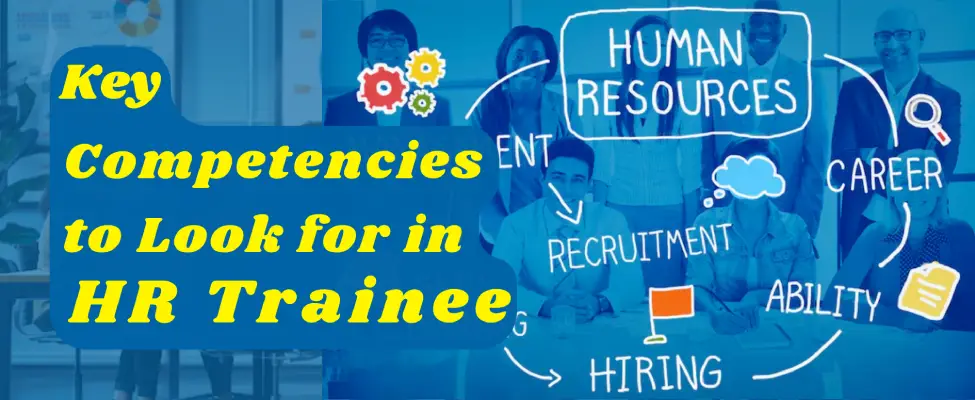Category
Training Needs Analysis
Training needs analysis is a systematic process of identifying which kind of training is required and providing the details related to training implementation. It is also known as a tool to identify the new skills, knowledge, and attitudes that employees need to acquire in order to improve performance.
The Training Needs Analysis (TNA) helps organizations to find out the gap in terms of skills and training in their existing employees to perform the current and upcoming Jobs efficiently. The Training Manager uses the Analysis very carefully to design the right Training program to meet the skill and training requirements of the employees to enhance productively and ultimately achieve the goals and objectives set by the organization.
Table of Content
What is Training Needs Analysis Definition in HRM
The term training needs analysis is often referred to as learning needs analysis in the human resource department. The training needs to reflect that there are lots of ways to perform a job and thus a huge opportunity of learning to work. The analysis is all about the gap in the skills and knowledge and how the HRM department can help to bridge the gap.
HRM department always puts focuses on the idea that a constant learning process is good for employees. It keeps their skills updated and improves their performance. The training needs analysis implies the analysis of skill improvement required to perform the current or future job with great excellence.
Role of Training Needs Analysis
Every leader or manager of the organization wants their employee to perform better and reach their optimum. In order to achieve the set goals and improve the productivity of the organization, it is important that employees have full capabilities and competencies to perform their assigned job.
Fundamentally the role of training needs analysis in HRM is to understand the difference between the current and desired performance of the employee and provide information about-
-
Which employee needs training?
-
What kind of training is required?
-
How a company can design an effective training program for such employees?
-
What will be the impact of this training on the performance of the employee?
-
What will be the cost and resource requirement of these training programs?
Requirement of Training Needs Analysis
Training needs analysis is always considered a first step toward helping an employee to improve their output at work. The requirement of training needs analysis is to
-
Understand the performance improvement needed by the organization
-
To relate this performance improvement with required skills, capabilities, and competencies
-
To figure out the exact course work or skill set training program employees need to attend
-
To design the appropriate training program to bridge the gap between the present productivity of the organization and desired output.
What is Training Needs Analysis Methods and Process?
The method of training needs analysis is selected based on the job type of the employee and the analysis that has to be carried out to understand the skill gaps. Here are a few popular training need analysis methods used in the corporate world:
-
Direct observation- In different working situations the training managers observe the working style of the employees. With the help of this observation, the managers get information about the performance gaps. The observation includes watching over the technical methodology followed to perform the job, the functional aspects of the job, and the behavioral aspects of the employee. It provides both qualitative and quantitative feedback about the current performance of the employee.
-
Interviews- It is a face-to-face conversation about the way an employee performs the job. It is an effective way to collect information about output gaps by talking with each employee or a team. It can be a formal or informal setting of the interview. The interview can be conducted in person or through virtual means.
-
Focus groups- It is a brainstorming process to understand the skill gaps among the employee. The employees working in the organization are encouraged to talk and discuss the ways to improve their work performance. This conversation is closely observed by analyzed by the training manager to understand the training requirement in the organization.
-
Assessments/surveys- Surveys are an effective and simple way to identify the performance deficiencies in a particular department. A well-designed questionnaire is circulated among employees to understand the training needs of the employees. The questionnaire can consist of a combination of open-ended and closed-ended questions along with some ranking and projective questions. To improve the credibility of the survey the employees are allowed to submit the answers anonymously.
-
Customer Feedback- In most of the service industry performance deficiencies are identified using customer feedback. The direct feedback from the customer indicates the specific work area which needs improvement.
-
Others: There are a few other methods of training that need analysis such as consolation with the persons working in a key position in the organization, by reviewing relevant literature of the work area, with the use of reports, records, and work samples.
Training Needs Analysis Process
There are different stages of training needs analysis that are used by the organization based on the job profile of the employees. However, there is a fixed process that is followed in all types of training needs analysis. Here is 4 steps process of training needs analysis:
Step 1- Performance Gap Analysis: Here the current and desired operation results of the employee performance are compared to identify the performance gaps. These performance gaps can also be termed as the difference between the required and actual productivity of the organization.
Step 2- Root Cause Analysis: Root cause analysis is a way to determine the basic issue behind the performance gaps. The issues are classified into 5 categories as skill, resources, incentives, motivation, and information such as feedback. Using rood cause analysis it is identified which area is leading to a lack of performance and which area needs improvement.
Step 3- Needs Analysis: A detailed analysis is carried out to design and implement the appropriate intervention to resolve the performance issues. Based on the categories identified in the root cause analysis a specific need for improvement is addressed in this step. This analysis includes analysis of the audience of training, job analysis, task analysis, environment analysis, and cost-benefit analysis.
Step 4- Recommendations: In this step, an appropriate training solution is proposed. It identifies the right kind of training program that an organization should run to improve the overall work productivity.
What are the Objectives and Components of Training Needs Analysis?
The important objectives of training need analysis are :
-
To ensure that the product/service requirement of customers have been met with the help of skilled employees
-
To help the organization set appropriate goals and achieve them
-
To create an appropriate performance benchmark that can be used to judge the employee productivity
-
To enable employees to evaluate their current skill sets and continuously upgrade their knowledge to improve their performance levels
-
To highlight the work quality issues in the organization and identify focus areas that need improvement.
Components of Training Needs Analysis
McGhee and Thayer’s Three Level Analysis is popularly used in the organization to understand the big picture of learning and development. This model of training needs analysis of three components at different levels which need analysis to identify the training needs in the organization.
1. Organizational Level
Providing training to employee which are not aligned with the business goals is considered a wastage of resources. It is very vital that training programs conducted in the organization would help the employees to achieve the strategic business goals of the organization. The organizational level training need analysis using data sources such as business goals, skill inventory, employee inventory, organizational culture, and customer satisfaction data to identify the training needs of the employees.
The organizational level of training need analysis to provide answers to the questions such as-
-
Which department needs training the most?
-
Which training program will act as a solution to resolve the business issues?
At organizational level analysis, clear and measurable outcomes of the training are identified to improve the success of the training program.
2. Operational Level
It is a job level analysis that is used to determine what kind of training is needed by the employee in order to achieve the desired level of work proficiency. It identifies the knowledge and skill required to execute a specific job in the organization. The operational level training need analysis using data sources such as work performance standards, job description, job specifications, and analysis of operational problems to determine the training needs of the employee.
The operational level of training need analysis to provide answers to the questions such as:
-
What is the standard performance expected for the job?
-
How an employee should execute the task to need the set performance standards?
-
What training program is appropriate to improve the skills, abilities, and knowledge of the employee to complete the job successfully?
3. Individual Level
At the individual level, the training need analysis to verify the way employee performs their job. The difference between the expected and actual performance of the employee is analyzed to arrive at the training need of the employee. The individual-level training need analysis using data sources such as performance appraisals, assessment of employee skills, interviews and questionnaires, customer surveys, and work samples to determine the training needs of the employee.
The individual level of training need analysis to provide answers to the questions such as-
-
Whether the employees have the essential skills and knowledge?
-
What are the barriers to proficient performance?
-
What is the appropriate training program to help the employee to meet desired performance standards?
Advantages and disadvantages of training needs analysis
Every process and tool used in human resource management has some positive and negative points. Here are some benefits and issues related to training that need analysis-
Advantages of Training Needs Analysis
- It determines the population which needs the training most in order to perform well in the organization.
- It determines what kind of training is required in terms of skills, knowledge, abilities, competency, and behavior of the employee.
- It helps the management to direct resources to regions of greatest priority of training.
- It helps employees and organizations to improve work productivity
- It helps the company to improve their quality of services and thus helps in customer retention.
Disadvantages of Training Needs Analysis
- Training need analysis can be a time-consuming process as it includes a lot of assessments and surveys.
- Training need analysis can be a costly affair for the company as often tired party is hired to conduct the training need analysis
- The low response rate of the employees to the internal surveys can have a negative impact on the effectiveness of the training need analysis
- Many times when the long process of training needs analysis is completed the management is no longer looking to fulfill the same business goals.
- Employees often hesitate to provide an honest response on self-assessment which can affect the result of training needs analysis.
Latest JobsView All
-
 Manager–Finance & Accounts... Pune 05 Jan 2026
Manager–Finance & Accounts... Pune 05 Jan 2026Ascent Human Solutions Pvt. Ltd..
-
 PPC Executive with Advance Excel... Noida 03 Jan 2026
PPC Executive with Advance Excel... Noida 03 Jan 2026Ascent Human Solutions Pvt. Ltd..
-
 Area Sales Manager - HORECA Sales... Ghaziabad 03 Jan 2026
Area Sales Manager - HORECA Sales... Ghaziabad 03 Jan 2026Ascent Human Solutions Pvt. Ltd..
-
 Educational Consultant @ Bengaluru... Bengaluru 06 Jan 2026
Educational Consultant @ Bengaluru... Bengaluru 06 Jan 2026Ascent Human Solutions Pvt. Ltd..
-
 Customer Training Specialist @ Mumbai... Mumbai 26 Dec 2025
Customer Training Specialist @ Mumbai... Mumbai 26 Dec 2025Ascent Human Solutions Pvt. Ltd..
RELATED ARTICLES
-
Business & Management Budget-Friendly Office Cubicles: Cost-Effective Options for ... Explore
-
Law & Compliances Integrating Local Law 152 Gas Inspections Into Your Annual B... Explore
-
Human Resource Key Competencies to Look for in HR Trainees Explore
-
-
Performance management Employee Happiness and Workplace Happiness 2025 Explore
-
Performance management Boosting Employee Engagement and Knowledge Retention through... Explore
-
Human Resource Why Employee Voice Matters? Explore
-
-
-
Human Resource HR Planning - How to Manage Your Leave Policy Structure Explore
-
Human Resource Mastering Leadership: The Three C's of Success Explore
-














